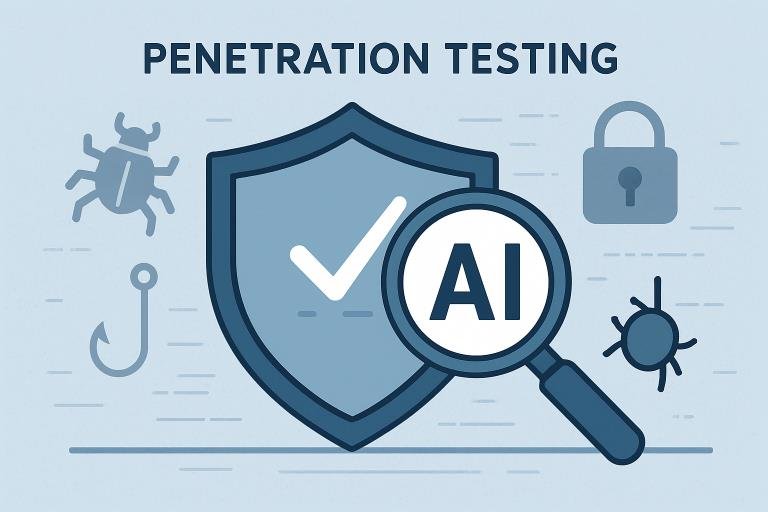Key Takeaways
- Traditional penetration testing methods are becoming insufficient in the face of evolving cyber threats.
- Integrating AI and automation enhances the effectiveness and efficiency of penetration testing.
- Continuous Threat Exposure Management (CTEM) offers a proactive approach to cybersecurity.
- Collaboration between offensive and defensive teams through Purple Teaming strengthens security postures.
- Regular updates and training are crucial for staying ahead of emerging threats and technologies.
As digital transformation accelerates, organizations face cyber threats that are evolving faster than ever before. Traditional security defenses are being challenged by increasingly sophisticated attack techniques, prompting organizations to reassess how they test, detect, and defend against vulnerabilities. Innovative strategies, such as simulated social engineering testing for organizations, are now vital in maintaining an effective cybersecurity defense.
Traditional penetration testing, a staple of enterprise security for many years, often fails to address the full scope of emerging risks. With attackers leveraging automation and machine learning, threat detection and response must keep pace with advances in adversarial tactics. A proactive, intelligence-driven approach to penetration testing provides organizations with both the insight and resilience required to face today’s most pressing cyber challenges.
The stakes have never been higher. Recent studies indicate that nearly all organizations remain susceptible to cyberattacks, underscoring the urgency for continuous security improvements. By integrating AI, automation, and enhanced collaboration across security teams, organizations can anticipate threats and address vulnerabilities before they are exploited.
Evolving regulatory landscapes and shifting digital ecosystems require more than periodic testing; they demand ongoing vigilance, adaptive strategies, and cross-functional cooperation. The pressure to upskill security teams and streamline processes is central to outmaneuvering adversaries and protecting critical data assets.
The Evolving Landscape of Cyber Threats
Cyber threats are more prolific and adaptable than ever before. Automated malware, ransomware-as-a-service, and targeted phishing campaigns have rendered one-time security assessments obsolete. According to Forbes, global cybercrime damages are projected to reach $10.5 trillion by 2025, with a significant portion of that growth attributed to the malicious use of AI. As adversaries enhance their tools with machine learning and artificial intelligence, defenders must respond with similarly advanced capabilities.
Limitations of Traditional Penetration Testing
Traditional penetration testing models provide only a momentary glimpse into an organization’s security posture. These assessments, often conducted on an annual or quarterly basis, quickly become outdated as new exploits and vulnerabilities emerge between engagements. Moreover, the reliance on manual testing limits scalability, leaving vast cloud infrastructures and complex networks with gaps in coverage. In many cases, risk remains undetected and unmitigated until exposed by a real-world attack.
Furthermore, static testing approaches struggle to address the continuous and connected nature of modern environments. Cyber attackers now operate at machine speed, where even brief intervals between tests can lead to undetected threats and costly breaches.
Embracing AI and Automation in Penetration Testing
The integration of AI and automation transforms the speed and accuracy of penetration testing. Automated vulnerability scanners and machine learning-powered test suites sift through massive volumes of system data, flagging vulnerabilities that might otherwise go unnoticed. AI-driven platforms enable organizations to instantly simulate attack scenarios across their digital assets, continuously adapting to new threat intelligence.
For example, advanced red teaming and automated adversary emulation can identify potential attack paths in real-time, enabling defenders to prioritize critical weaknesses. According to Forbes, AI-driven security solutions provide the speed, intelligence, and automation needed to stay ahead of attackers.
Continuous Threat Exposure Management (CTEM)
The CTEM framework advances penetration testing by establishing an ongoing, end-to-end process for identifying and mitigating risk. Unlike periodic assessments, CTEM leverages automated risk discovery, real-time analysis, and contextual prioritization. Organizations benefit from immediate visibility into their expanding attack surface, enabling rapid remediation and reduced exposure windows.
CTEM’s continuous cycle enables faster alignment with business priorities, ensuring critical systems receive focused protection. Real-world attack simulations run alongside vulnerability management workflows to provide actionable intelligence that keeps pace with evolving threats.
The Role of Purple Teaming
Purple Teaming closes the gap between offensive (red) and defensive (blue) security disciplines through active collaboration. Rather than operating in isolation, these teams share findings and calibrate defense strategies against live, simulated threats. Purple Teaming exercises accelerate the development of robust detection rules, incident response protocols, and forensic investigation skills.
This approach drives organizational maturity by fostering cross-pollination between attack and defense expertise, resulting in stronger, more adaptable security architectures.
Implementing Advanced Penetration Testing Strategies
Adopt AI and Automation
Utilize AI-driven penetration testing tools to enhance efficiency, speed, and coverage. These technologies continually learn from new threats, enabling organizations to address vulnerabilities preemptively.
Implement CTEM
Establish a CTEM program to shift from static, periodic assessments to real-time vulnerability management. Continuous monitoring allows organizations to identify and patch weaknesses before they are exploited swiftly.
Foster Collaboration with Purple Teaming
Regular Purple Teaming exercises facilitate seamless knowledge transfer and rapid innovation in defense. Invest in workshops and joint red-blue drills to enhance team coordination and response capabilities.
Regular Training and Continuous Improvement
Cyber threats change rapidly, making regular training essential for all security personnel. Continuous learning, paired with iterative updates to security protocols, helps maintain readiness and resilience.
Conclusion
Protecting organizations from modern cyber threats means moving beyond conventional security assessments. By adopting advanced penetration testing methods that incorporate AI, automation, CTEM, and Purple Teaming, organizations can stay ahead of adversaries and proactively safeguard their digital assets. Staying attuned to emerging risks, updating strategies, and empowering security professionals with advanced tools are critical steps toward a resilient, modern cybersecurity defense.


